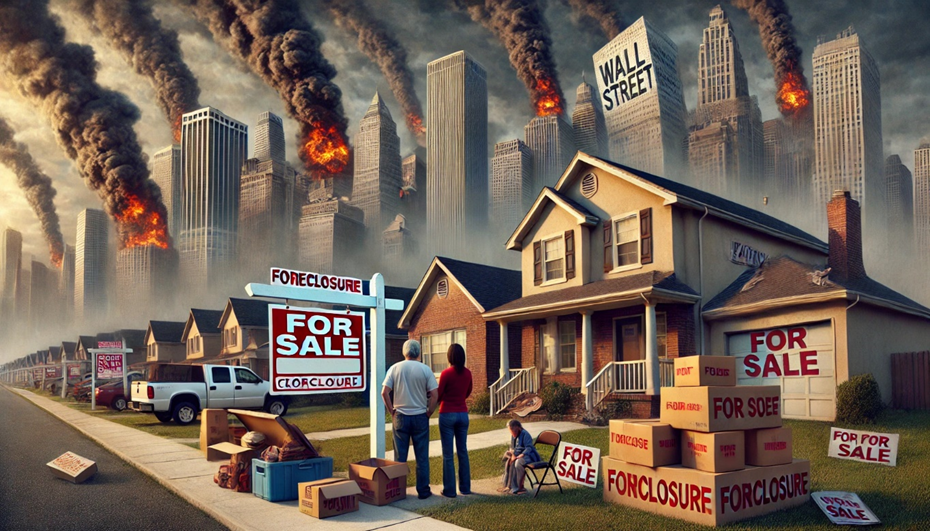The 2008 Real Estate and Financial Bubble
The 2008 real estate and financial bubble was one of the most significant economic crises in modern history. This global collapse deeply affected markets, governments, and millions of individuals, exposing weaknesses in the international financial system. Centered on the U.S. housing market, its ripple effects were felt worldwide, leaving critical lessons for the future.
Context: Real Estate Boom and Easy Credit
In the years leading up to 2008, the U.S. housing market experienced an unprecedented boom. Housing prices surged dramatically due to easy access to credit, low-interest loans, and increasing demand for properties. This environment allowed even individuals with poor credit histories (subprime borrowers) to obtain mortgages.
Banks and financial institutions, seeking to maximize profits, bundled these mortgages into financial instruments known as mortgage-backed securities (MBS) and collateralized debt obligations (CDOs). These investments, marketed as safe, were sold worldwide, attracting both private and institutional investors.
This system, driven by short-term incentives, relied on housing prices continuing to rise. However, the bubble was inflated by high-risk loans and a growing disconnect between the real value of properties and their market prices.
The Boom and Speculation
Between 2000 and 2006, housing prices in the U.S. doubled in many regions, and mortgage lending skyrocketed. This boom was fueled by relaxed credit policies and the proliferation of subprime mortgages, which offered low initial payments and adjustable rates that would later increase.
The financial sector contributed to the problem by creating derivative products based on these mortgages. Many investors purchased these instruments under the false assumption that they were low-risk, as credit rating agencies gave them top-tier ratings, ignoring the underlying risk.
Speculative behavior reached the point where many people purchased homes not to live in them but to sell them quickly at higher prices. This speculative activity, combined with excessive leverage by banks and financial institutions, set the stage for a massive collapse.
The Bubble Bursts
In 2007, rising interest rates and an increase in defaults by subprime borrowers triggered the housing market's collapse. Housing prices began to fall, leaving millions of homeowners with mortgages higher than the value of their properties—a phenomenon known as underwater mortgages.
The impact on financial institutions was catastrophic. Banks, having accumulated large amounts of toxic assets tied to mortgages, began reporting massive losses. In September 2008, the bankruptcy of Lehman Brothers, one of the largest U.S. investment banks, marked the crisis's peak, unleashing global panic.
Stock markets plunged, credit froze, and millions lost their jobs and homes. The ensuing recession was the worst since the Great Depression of 1929.
Factors That Worsened the Crisis
Several factors amplified the effects of the housing collapse:
- Financial Deregulation: Deregulation of markets allowed financial institutions to take excessive risks without sufficient oversight.
- Inflated Ratings: Credit rating agencies gave unjustifiably high ratings to financial instruments based on subprime mortgages, creating a false sense of security among investors.
- Excessive Leverage: Banks and other financial entities operated with high levels of leverage, making them extremely vulnerable to any decline in asset values.
- Complex Financial Products: The proliferation of complex and opaque financial products made it difficult to assess the real risks, both for institutions and regulators.
Consequences of the Crisis
The 2008 crisis left deep scars on the global economy:
- Massive Unemployment: Millions of people worldwide lost their jobs as companies cut costs or shut down operations.
- Loss of Homes: In the U.S., millions of families lost their homes due to widespread foreclosures.
- Financial Market Collapse: Global stock markets experienced historic declines, and trust in the financial system was severely damaged.
- Government Intervention: Governments worldwide implemented massive bailouts to stabilize banks and prevent a total financial meltdown. In the U.S., the Troubled Asset Relief Program (TARP) injected hundreds of billions of dollars into the financial system.
Lessons from the 2008 Crisis
The 2008 real estate and financial bubble highlighted the need for greater regulation and oversight of the financial system. The crisis led to the enactment of reforms such as the Dodd-Frank Act in the U.S., designed to prevent future crises by strengthening bank supervision, regulating derivatives, and protecting consumers.
However, the crisis's roots also raise broader questions about the nature of markets and human psychology. Rampant speculation, overconfidence, and a lack of transparency remain challenges for global financial systems.

